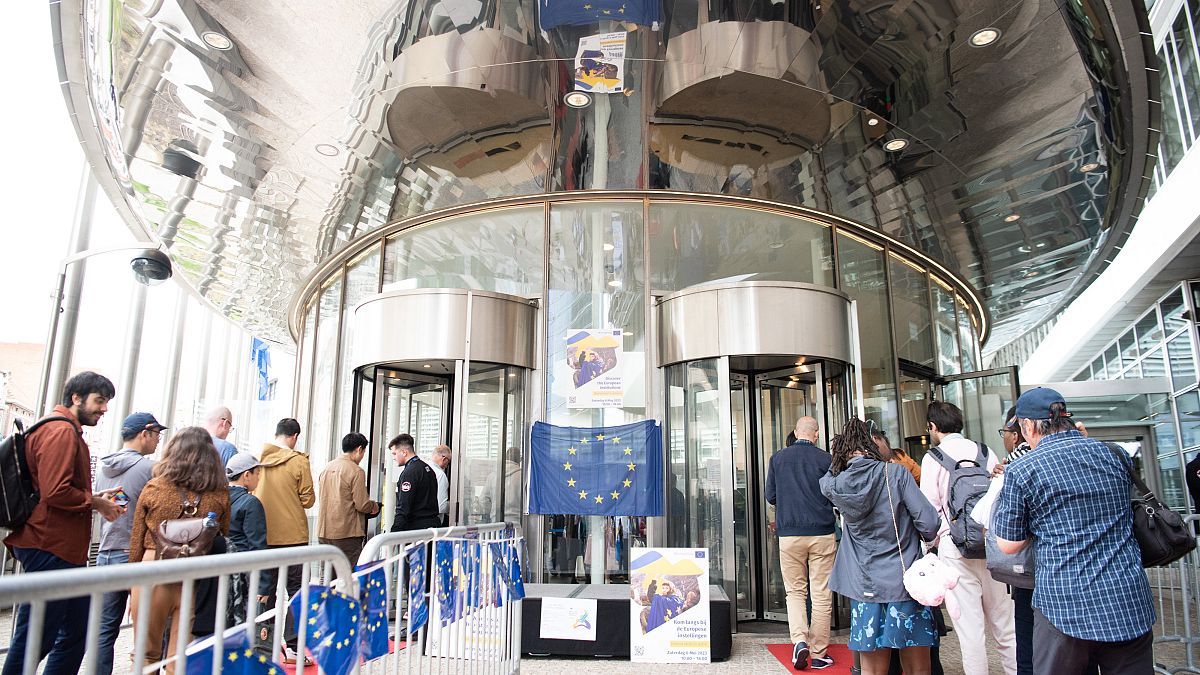Midwest
Remains of 17-year-old soldier killed in Korean War identified

The remains of a 17-year-old soldier from Michigan who was killed in the Korean War in 1950 have been identified and will be buried in his home state, military officials said.
U.S. Army Pfc. Thomas A. Smith’s remains were identified in September by military scientists who analyzed DNA, dental and anthropological evidence, the Defense POW/MIA Accounting Agency announced Tuesday.
Smith, who was from Grant, Michigan, will be buried in that western Michigan city at a date that has yet to be determined, the agency said.
REMAINS IDENTIFIED AS VIETNAM VETERAN NEARLY 50 YEARS AFTER FARMERS CHASING PIG STUMBLED UPON SKELETON
Smith was 17 when on Aug. 2, 1950, he was reported missing in action when his unit took part in “defensive action near Chinju at the southern end of the Korean peninsula,” the DPAA said. His remains could not be recovered and the Army issued a presumptive finding of death for him in late 1953.
A 17-year-old Michigander killed in action during the Korean War has been identified and will be buried in his home city.
The remains recently identified as Smith’s were recovered in late 1950 near the village of Hwagye, South Korea, by the U.S. Army Quartermaster Corps but could not be identified. In 1956, they were buried in Honolulu at the National Memorial Cemetery of the Pacific, known as the Punchbowl, with other unidentified service members who died in the Korean War.
In March 2019, Smith’s remains were disinterred and sent to the DPAA laboratory for analysis.
A rosette will be placed next to Smith’s name at the Courts of the Missing at the Punchbowl to indicate he has been accounted for.
Read the full article from Here

Detroit, MI
Detroit police want help finding missing 58-year-old man

DETROIT – Police are seeking information about a 58-year-old man who went missing in Detroit.
Tony Hines was last seen in a Metro Detroit hospital in the 2700 block of W. Grand Blvd. on Tuesday (May 28) and did not return home.
He was last seen wearing a navy blue fleece jacket, blue and white plaid shirt, black jeans, and dirty white gym shoes.
According to his sister, he suffers from Bipolar Disorder and Schizophrenia.
| Tony Hines | Details |
|---|---|
| Age | 58 |
| Height | 5′9″-6′”0 |
| Hair | Black and grey |
| Weight | 170 |
| Eyes | Brown |
Anyone with information should contact the Detroit Police Department’s 10th Precinct at 313-596-1040 or Crime Stoppers at 1-800-Speak Up.
All tips to Crime Stoppers are anonymous. Click here to submit a tip online.
READ: More Missing in Michigan coverage
Copyright 2021 by WDIV ClickOnDetroit – All rights reserved.
Milwaukee, WI
Chicago White Sox surrender 23 hits in a 12-5 loss to the Milwaukee Brewers — their 9th straight defeat

MILWAUKEE — The hits just kept coming and coming Friday against the Chicago White Sox.
Twenty-three in the game, to be exact, for the Milwaukee Brewers.
“It was like they found every hole,” Sox third baseman Danny Mendick said.
The Sox hung around for a while, taking a one-run lead into the seventh. But the Brewers sent 12 batters to the plate while scoring six runs on eight hits in the inning on the way to beating the Sox 12-5 in front of 30,931 at American Family Field.
“We took a 5-4 lead into the bottom of the seventh, and they just kept grinding out at-bats,” manager Pedro Grifol said. “Putting the ball in play, and they ended up with 20 ground ball base hits and I think 17 of them were singles.
“And just one of those days where everything found a hole.”
The Sox extended their season-high losing streak to nine games, allowing season-highs in runs and hits.
“It’s part of baseball, they took what was given to them,” starter Erick Fedde said. “They tried to hit the ball the other way where there were holes. Some credit to them for sure.
“You don’t accidentally usually get 23 hits but just one of those things. As a pitcher, if you’re trying to limit damage, balls on the ground are usually a good thing.”
The Sox got some big hits early. Paul DeJong homered — his team-leading eighth — and Corey Julks drove in two with a double to give them a 3-1 lead in the third.
The Brewers scored three in the fourth against Fedde, who allowed four runs on nine hits with eight strikeouts and four walks in five innings.
“Had traffic all day,” Fedde said. “They made me work. I think just overall they had a lot of good at-bats. They didn’t give anything away. They took good pitches and hit them where there were holes. Tough day.”
The Sox regained the lead with two in the fifth. Gavin Sheets collected an RBI on a sacrifice fly and Korey Lee drove in a run with an infield hit to put the Sox ahead 5-4.
The Sox still held that lead after Michael Soroka struck out two to get out of a bases-loaded, one-out jam in the sixth without allowing a run.
But Brice Turang tied the score with an RBI single against Soroka and William Contreras put the Brewers ahead with an RBI single against John Brebbia. Christian Yelich drove in two more with a check-swing double down the third-base line.
Jake Bauers and Sal Frelick also had RBI hits in the inning.
Yelich finished with five hits and five RBIs, sending the Sox to their 13th loss in 14 games.
With a record of 15-43, the White Sox are off to their worst 58-game start in franchise history.
“Of course it’s tough,” Fedde said. “We want to win ballgames. Just keep grinding, piece things together. The bats were good for us today. We scored some runs. On our end as a pitching staff, we’ve just got to be a little better to finish it off.”
Minneapolis, MN
The National Eucharistic Pilgrimage exists the Archdiocese of St. Paul Minneapolis and enters the Diocese of Winona-Rochester – TheCatholicSpirit.com

The National Eucharistic Pilgrimage (NEP) exited the Archdiocese of St. Paul and Minneapolis May 31, concluding more than a hundred miles of pilgrimage with thousands of people and more than 35 stops over seven days, some of them not on the public schedule.
The pilgrimage was received at St. Micheal in Pine Island after a seven-and-a-half-mile procession with more than 100 participants from St. Paul in Zumbrota. St. Micheal hosted adoration of the Eucharist, a rosary and Benediction with Archbishop Bernard Hebda before the monstrance traveled by van into the Diocese of Winona-Rochester. The pilgrimage will travel in that diocese through June 7, when Bishop Robert Barron will hand the monstrance to Bishop William Callahan of the Diocese of La Crosse on a bridge over the Mississippi River.
The procession is part of the northern Marian Route of the NEP, which launched May 19 from Lake Itasca in the Diocese of Crookston. On the same day, three other processions departed from the east, west and south. All four groups will converge in Indianapolis for the 10th National Eucharistic Congress July 17-21.
Monica Tschann, 58, who completed the walk from St. Paul to St. Micheal and attended a Pentecost weekend Star of the North Eucharistic Congress in Bemidji that culminated in the launch of the Marian Route from Itasca State Park, said the U.S. bishops’ three-year National Eucharistic Revival has drawn her closer to Christ in the Eucharist.
“I felt the Holy Spirit (on pilgrimage) more than I ever have before,” said Tschann, whose husband, Paul, is a deacon at Sts. Peter and Paul in Mazeppa and will help with an upcoming Eucharistic procession in the Diocese of Winona-Rochester. “We just want to partake in as much as we can because it is just such an amazing event.”

Archbishop Hebda, who spoke to the congregation after Benediction at St. Micheal, said graces that the pilgrimage bestowed on the archdiocese will take years to unfold.
“It has been such a privilege to encounter Jesus in the Eucharist on this Eucharistic Pilgrimage at different points in our archdiocese,” the archbishop said. “Now that we have come to the conclusion of our pilgrimage in our archdiocese here in Pine Island, I am just overwhelmed with joy and with gratitude that we have been blessed in this way. I think that it will really be a long time until we really know all the fruits that come from this experience,” the archbishop said. “Here in Pine Island, a small community, we see so many young families that have come out. I just hope that the children who were here today will be able to speak about this in their future, that they were there in this historic event, and it was one of those times that they knew that Jesus was present and alive.”
While members of the public accompany the Eucharist at various points on each of the four routes, a group of 24 perpetual pilgrims — six on each route, as well as two seminarians on the Marian Route — are tasked with accompanying the Eucharist for the entirety of the pilgrimage. They travel by foot or in their support vehicle when walking is not possible.
On of the perpetual pilgrims, Mason Bailey, 24, a seminarian at St. Meinrad Seminary in St. Meinrad, Indiana, said he was impressed with the attendance at pilgrimage events in the archdiocese. Other perpetual pilgrims commented on the diversity of attendees.
“The people have really shown up in the archdiocese,” Bailey said. “That has been amazing to see.”
The key event on the Marian Route as it coursed through the archdiocese was the 4.5-mile Source and Summit Eucharistic Procession on Memorial Day May 27 along historic Summit Avenue in St. Paul. Roughly 7,000 people encountered the Eucharist in that procession, which began at The St. Paul Seminary and ended at the Cathedral of St. Paul.
Stops May 28 included unannounced prayer time for legislators in front of the Minnesota State Capitol building in St. Paul and public adoration of the Eucharist at the oldest parish in the archdiocese, St. Peter in Mendota.
The procession will maintain its busy schedule in the Diocese of Winona-Rochester. Most notably, to commemorate the feast of Corpus Christi on June 2, there will be a procession from St. John the Evangelist, Rochester’s co-cathedral, to the Mayo Clinic Civic Center for Mass with Bishop Barron. And on June 3 pilgrims will accompany the Eucharist on a 10.5 mile walk from Rochester to Eyota.
To see a full schedule of events on the pilgrimage route in the Diocese of Winona-Rochester, visit here.
-

 World1 week ago
World1 week ago€440k frozen in Italy over suspect scam by fake farmers
-

 News1 week ago
News1 week agoBuy-now, pay-later returns and disputes are about to get federal oversight
-

 World1 week ago
World1 week agoOmbudsman probes Commission's senior staff 'revolving door'
-

 News1 week ago
News1 week agoRead the I.C.J. Ruling on Israel’s Rafah Offensive
-

 News1 week ago
News1 week agoVideo: Protesters Take Over U.C.L.A. Building
-
/cdn.vox-cdn.com/uploads/chorus_asset/file/25459708/Screenshot_2024_05_22_at_9.08.56_AM.png)
/cdn.vox-cdn.com/uploads/chorus_asset/file/25459708/Screenshot_2024_05_22_at_9.08.56_AM.png) Technology1 week ago
Technology1 week agoSuper Mario Maker 64 exists, thanks to a new ROM hack
-

 World1 week ago
World1 week agoHoping to pave pathway to peace, Norway to recognise Palestinian statehood
-

 Politics1 week ago
Politics1 week agoFauci adviser's alleged destruction of COVID origin docs must be probed by AG: Rand Paul













